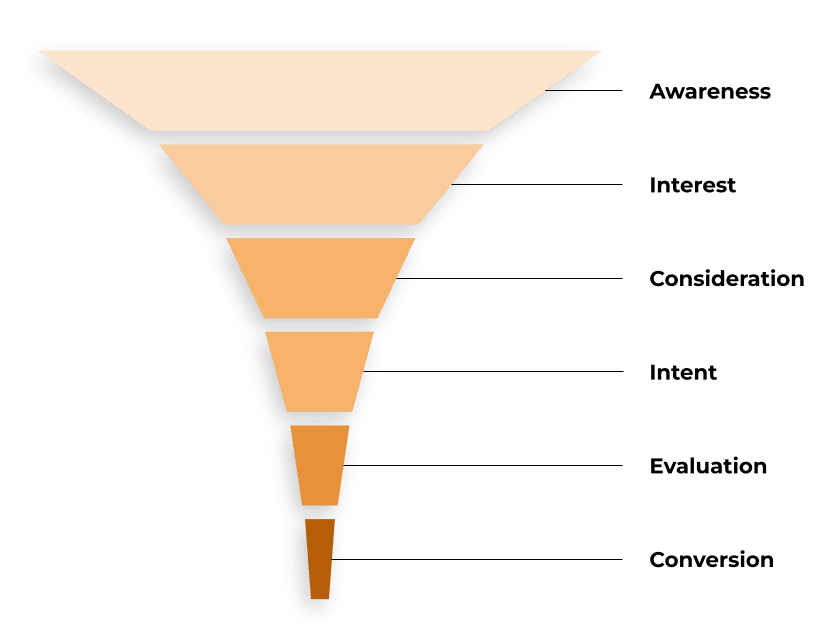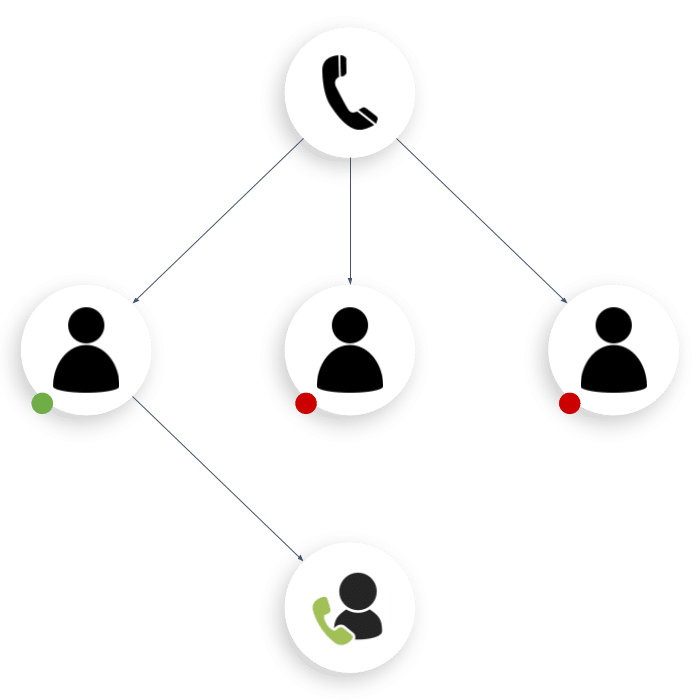Getting new customers can be tough, especially for manufacturers. It might seem like something only sales and marketing people do. However, your manufacturing business needs to find and keep new customers regularly. This helps your business grow, make more money, and stay healthy.

In manufacturing, every area is different and needs its own approach. You can’t always use the same methods for everyone. Your strategy should be as detailed and specific as your products. This guide gives you special tips and tricks that work well for the unique challenges in manufacturing.
What is lead generation for manufacturers?
Lead generation for manufacturers is about attracting people who might want to buy your products or services and then convincing them to become customers or clients. This typically includes identifying your ideal prospective clients, engaging with them through various marketing strategies, and nurturing qualified leads to convert them into sales opportunities.
The process of getting your target audience to know about your products or services and convincing them to buy involves several steps. Knowing these steps helps you understand what actions to take at each one.
You’ll learn the best time to give out information, discuss prices, and help someone make the decision to buy from you. It’s about leading potential buyers at the right moment with the right moves. By doing this, you can successfully attract more potential customers and turn good leads into customers.
The key stages of a sales funnel are:

- Awareness: The first step is making your target audience aware of your products and services. This can be challenging. It involves strengthening your online visibility with tactics like search engine optimization (SEO), engaging content, paid ads, and creating outbound email campaigns.
- Interest: Once a potential lead knows about your business, the next step is to keep them interested. Give them lots of information about what you offer and how you’re different or better than your competitors. This can be through online content, stories of how others use your products, or testimonials from happy customers.
- Consideration: Now, people are really considering buying from you. You need to convincingly demonstrate the benefits of your products or services, persuading them to seek more information or consider a partnership. At this stage, it’s important to personalize the experience for each potential customer, showing how your solutions can meet their specific needs and challenges.
- Intent: When someone is ready to buy, make it easy for them with a smooth path to purchase. You might need to give them quotes, detailed specifications, or trial offers. Your sales team is important here to help guide the customer and answer any questions they might have.
- Evaluation: In this stage, you should help customers make their final decision. Be ready to provide more information, talk about pricing, or discuss after-sales services. Being responsive and flexible to what the customer needs is key to closing the sale.
- Conversion: This final stage is all about turning interested people into actual buyers. It’s where you seal the deal and make the sale. After this, keeping in touch with customers and making sure they’re happy can lead to more sales in the future, either through repeat business or recommendations they make to others.
Understand Your Ideal Clients in Manufacturing
We’ve said it before, you first need to know your ideal buyer persona before you start your outreach. This helps you know who to go after. Otherwise, your lead generation efforts may go to waste.
Knowing your target audience in the manufacturing sector isn’t just about recognizing their industry. It’s about diving deep into the specific needs, challenges, and aspirations of sub-sectors. Whether you are targeting aerospace manufacturers, automotive suppliers, or small-scale machinery firms, understanding the nuances of these niches is important. What keeps a plant manager in the automotive sector awake at night might differ entirely from the concerns of a procurement officer in the aerospace manufacturing industry.
Example of Ideal Customer Profile (ICP) Identification
Let’s say your focus is on small to medium-sized manufacturers in the aerospace industry. These companies are likely grappling with issues such as reducing lead times, ensuring precision in production, and meeting stringent regulatory requirements. Your ICP, in this case, would be businesses that specialize in aerospace parts, have a workforce of 100-500 employees, and show an interest in adopting advanced manufacturing technologies.
Build a Database of Your Ideal Clients
Building a comprehensive database is your starting point for effective outreach. Tools like Apollo.io and ZoomInfo are valuable platforms that allow you to find and organize information about potential customers.
These tools help you identify who might be interested in your products and give you details like their company size and industry. With this info, you can create targeted marketing campaigns that speak directly to their needs.
But you should also try to go deeper with your data collection. Refine your searches to include filters specific to manufacturing, such as SIC codes, the type of machinery used, software adopted (like CAD for precision engineering firms), or even specific certifications held.

Segment your database for more accurate targeting
Once you’ve compiled a comprehensive database, you should segment your audiences. For instance, create separate lists for companies that specialize in high-precision manufacturing versus those that focus on large-scale production. This allows for more targeted and relevant communication.
Develop an Email Outreach Strategy
Email outreach is a big part of lead generation, especially for manufacturers. It’s a direct way to reach potential customers and can be highly personalized to address their specific needs and challenges. Using email in your lead generation strategy lets you talk to a lot of people at once, keep track of who’s interested, and change your message to fit different groups in your target market.
Create email campaigns that resonate with your ICP
Your email campaigns need to speak directly to the heart of your ICP’s challenges and needs. For example, for a precision engineering firm, discuss solutions around minimizing production errors or optimizing the use of advanced materials. For a heavy machinery manufacturer, focus on topics like improving operational efficiency or reducing maintenance downtime.

Use Cold Calling for a More Personal Lead Generation Approach
Cold calling is a way to add a personal touch to your lead generation strategy. It’s a way to reach out directly to potential clients, which is something digital methods can’t always do. In many cases, your ideal client might respond best to cold calling.
When done right, it can open doors to new business opportunities and establish valuable relationships. It’s all about making that first connection and sparking interest in what your industrial company offers.
Develop Scripts and Train Your Team
Create scripts that are adaptable but well-informed. Teach your team not only how to talk well but also about the details of different manufacturing areas. They need to know how to talk about things like industry trends, new technology, and rules that affect the industry. This knowledge will make them more effective in their conversations.
| Advanced Tip: Use an AI cold calling service to make the process more effective and less time-consuming. |

Use Content Marketing to Connect with Manufacturers
In the manufacturing industry, content marketing is important because it’s often the first place B2B buyers turn to when doing their research. Before they even consider a purchase, they’re looking for information that can help them understand their challenges and find solutions. By providing insightful, relevant content, you can capture their attention early on. This makes you a go-to source for information, setting the stage for a relationship that can lead to a sales conversation.
Create Relevant Content that Speaks to Your Audience
Your content should be a rich source of information that addresses the specific needs and interests of your target audience. For instance, if targeting the electronics manufacturing sector, write about the latest trends in electronic component miniaturization or the challenges in supply chain management for electronic parts.
| Advanced Tip: Write blog articles that answer frequently asked questions to your sales team. If they’re asking these questions to your sales representatives, they are likely researching these answers online. |
Create different types of content to speak to buyers in different stages
Diversify your content types. Use blog posts for in-depth discussions, infographics for quick insights, and videos for demonstrating complex processes or showcasing success stories. Webinars can be particularly effective in engaging a manufacturing audience, offering deep dives into topics like lean manufacturing, quality control, or automation technologies.
Get in Front of Target Accounts with LinkedIn and Google Ads
Using LinkedIn and Google Ads is a smart move for manufacturers looking to boost their lead generation efforts. LinkedIn offers a professional platform to connect with specific companies, job titles, and industry groups, making your outreach highly targeted. Google Ads, on the other hand, provides a broad reach with its search and display campaigns, allowing you to capture the attention of potential customers actively searching for your services.
Combining these platforms ensures a comprehensive approach to reach your audience at different stages of their decision-making process.
Use LinkedIn Ads to Reach the Right Companies and People
LinkedIn Ads are really important for manufacturers who want to find new leads. They let you target specific groups of professionals, like certain companies, job titles, and industry groups, right on LinkedIn where these people go for work-related networking and news. With LinkedIn’s special targeting features, manufacturers can make ads that really focus on the key people who make decisions or have influence in their area of manufacturing.

| Advanced Tip: Create a retargeting campaign on LinkedIn to retarget prospects who visit your website. |
Create Targeted Google Ads Search Campaigns with Specific Keywords
Develop Google Ads search campaigns with keywords that your specific audience is likely to use. For example, if you provide plastic injection molding, use keywords like “high-quality plastic molding services” or “custom injection molding solutions.” Tailor your ad copy to address the specific challenges and needs of your ideal customers.
Expand Your Reach with Google Display Ads
Google Display Ads are another powerful tool in your manufacturing lead generation strategy. They allow you to place visual ads on a vast network of websites that potential customers visit. You can target these ads based on interests, browsing behavior, or even specific websites related to manufacturing.
This increases the visibility of your brand in places where your audience is already spending time online. By capturing their attention with engaging visuals and clear messaging, you can drive more traffic to your website and generate high-quality leads.
| Advanced Tip: Upload a segmented list of prospects to Google Ads to target them individually. |
Professional Lead Generation Services for Manufacturers
Sometimes, partnering with a lead generation company that specializes in the manufacturing sector can be the most effective strategy. These services bring a level of expertise, particularly in understanding the long sales cycles, technical nuances, and specific needs of manufacturing businesses.
Choosing the Right Partner
When selecting a lead generation partner, look for those with proven experience in your target sectors. They should be able to demonstrate a deep understanding of the manufacturing landscape and offer tailored strategies that align with your specific goals.
Are You Maximizing Your Lead Generation for Manufacturing?
Generating leads in manufacturing is important and a bit tricky. This guide has shown you how to attract and talk to the right people. It’s not just about finding anyone; it’s about finding the right fit for what you offer. Using these industry-specific tactics can help. Know who you want to reach, tailor your messages for them, and use different ways to grab their attention. All these steps are key to growing your business in the manufacturing world. Are you ready to try these ideas and grow your leads?



